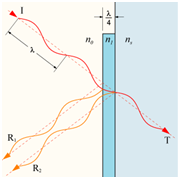By Dennis Che, Business Development Manager at New Vision Display, Inc., a leading touch screen display supplier.
Touch screens have forever changed the way we interact with devices. Our next generation of youth already expects many screens (TV screens included) to have touch screen interfaces.
I’ve watched my children walk through the electronics section with both awe and surprise. My youngest would walk up to a TV, and — to my shock — press on the screen almost knocking it over (not to mention the nasty finger print he left behind as evidence). In his mind, the TV is an oversized touch screen monitor. Whereas my oldest (who is hinting that she needs a “portable” computing device) would intently stare at the tablets and notebook computers and tell me which ones she did not like because the reflections are distracting. I thought to myself, “The reflections are “the” distractions? Really???
From an early age, we can see that the consumer experience is already being shaped by the products we introduce to our youth (tablets, laptops, kiosks, appliances, etc).
The Consumer Experience
As you work with your touch screen display manufacturer to design your touch-enabled product, a couple of acronyms might have crossed your desk: AR, AG, and AF/AS. What do these acronyms mean and how will they work into your designs and the consumer experience? Let’s explore the differences.
AR (Anti-Reflection)
This type of treatment involves applying a film or coating of a specific thickness to the surface of a cover lens. The film reduces the reflections on the surface by cancelling out a specific wavelength of light as it is reflected back to the consumer. When a specific wavelength of light passes through the AR material, some of it is reflected back to the consumer at the surface of the AR film (R1) and some of it is reflected at the surface of the cover lens (R2). The thickness of the AR film causes the reflected wavelengths (R1, R2) to be reflected exactly out of phase with each other (see diagram 1.1) so that they cancel each other out. Thus the consumer will not see their own reflection, instead they will see a brighter and more vivid display.

Diagram 1.1 (courtesy of Wikipedia)
Article Source: https://goo.gl/FMyQDR
No comments:
Post a Comment